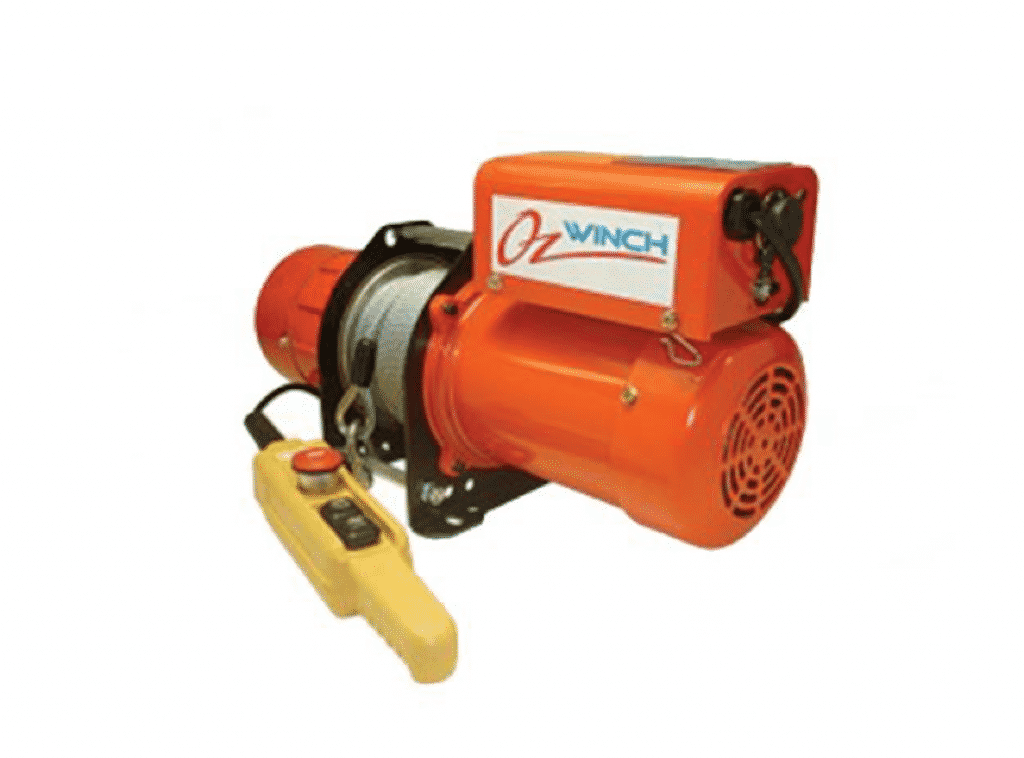Not all winches are created equal. That’s the first rule to observe when you navigate your way through selecting the correct winch for any job. You have the option of an electric winch or a manual winch. Your choice will depend on the mass of the load you’re lifting and the capacity of the winch.
Manual winches are mostly used in environments with limited or no electrical power and are typically used for pulling and not a lot of lifting. In contrast, an electric winch has the versatility and power to lift, pull and place loads conveniently in any environment.
Let’s look at the main features you should look out for before selecting a winch.
Power Check
Safety is a big deal when it comes to lifting and moving heavy loads. It’s essential to check the winch you’re working with has the power and capacity to seamlessly do the work. These four modes of power supply to a winch is a basic guideline you can use to check the power on your winch:
- Electric motors: There are two categories when it comes to electric winches. Battery operated motors and connected motors. When you connect the motor to a vehicle it becomes battery powered and connected motors have their own internal power supply. The rule of thumb when using an electric winch is to use it intermittently to avoid overheating.
- Combustion engines: If you’re using a winch operated by a combustion engine, you’re usually working with a 100% duty ratio for heavy lifting. These types of winches are more costly than your ordinary electric winches and sturdier mechanically.
- Hydraulic winches: This type of winch power is mostly used in maritime environments and requires a connection to a hydraulic circuit to power the drum. It has substantial power to lift and move heavy loads.
- Manual winches: If you’re lifting and moving lighter loads this winch is ideal. It requires no external power and it’s compact and portable to use in any environment.
Size Matters
It’s crucial to select the appropriate size winch for heavy lifting and to estimate the proportions of the winch properly. First, you have to determine the weight of the load you’re moving or lifting and make room for a 50% safety margin. Remember, the load must always be greater than the weight you intend to tow or lift.
Here are some basic checks to do when selecting the appropriate size winch for any job:
- Check the winch capacity which is usually specified in kilograms (kg) or pounds (lb)
- Make sure the traction volume is double the size of the load
- Check the manufacturer’s specifications to ensure the load is not only for towing but can be used for lifting as well
- Review the difference between the tempo of an idle winch rotating and the tempo of a pulling or towing winch running at full capacity
- The usual speed of a winch pulling a load runs at 1.5 meters per minute; be careful when exceeding this speed as it will result in higher consumption
Industry Check
Picking the correct winch for the job depends on the industry you’ll be using the winch in. There are several industries that rely on winches to do the work such as:
- Automotive industries: A winch comes in handy when towing vehicles and it also forms the basis of tow trucks. A manual winch is especially useful when you’re stuck in a rural area and need to pull a car.
- Manufacturing: The manufacturing sector relies on mechanical devices such as electric winches to lift heavy loads from one place to another. It also relies on the power of the winch to horizontally pull or lift loads that can usually not be done using manpower only.
- Maritime: The seafaring industry uses various winches to anchor or moor lines. Ships and boats also use a winch to control sheets.
- Mining: Winches are vital in the mining industry to incline shafts and for handling materials that need to be hoisted to the top. It’s also used in offshore rigging and when a decrease in manpower is required.
- Construction: Due to the versatility of winches, they’re frequently used to drag heavy objects on the ground on a construction site. It’s also used in zones that are inaccessible by other mechanical equipment such as cranes.
- Entertainment: The entertainment industry is very reliant on winches to move sets when filming. Winches are also used to lift speakers and other props when setting up stages. Using a winch provides the control and precision to hoists and lift components perfectly and safely.
Final Thoughts
It’s fair to say the power and versatility of winches are unmistakable in many industries. It’s just always essential to select the correct winch for your specific job. An electric winch usually has more lifting power than a manual winch and provides greater output in terms of capacity.
Electric winches are also more popular because of their efficiency and convenience. Whatever winch you decide on, make sure you use it safely and follow the manufacturer’s specifications. Keep these basic guidelines handy and you’ll be well on your way to get the most out of your equipment.
